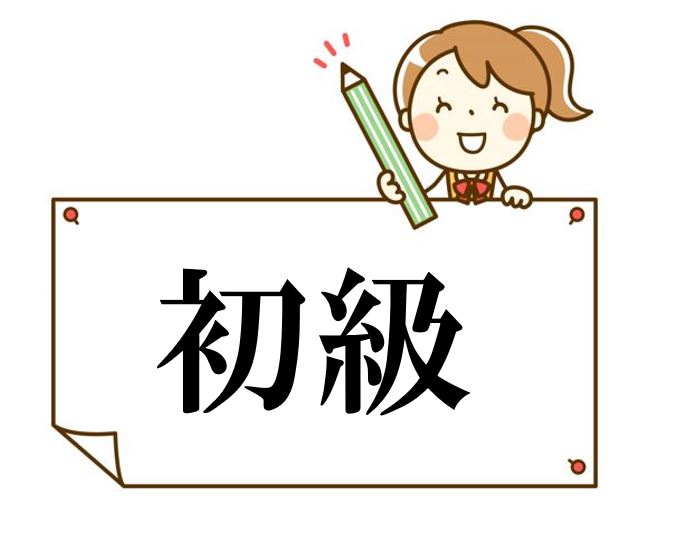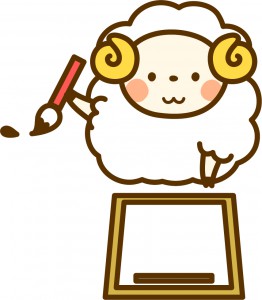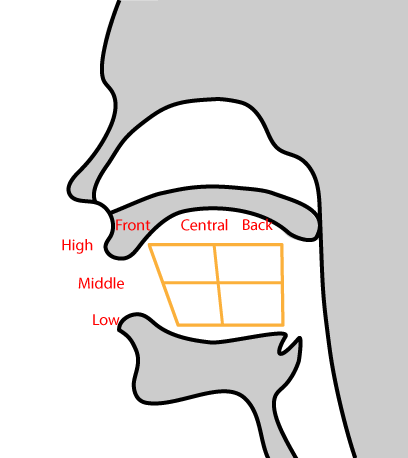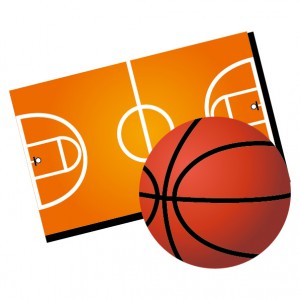As we mentioned in the previous article: How to Become Fluent in Speaking Japanese, becoming fluent in Japanese can be reliant on three factors: Knowledge, Practice, and Experience. First, you accumulate the necessary knowledge; second, practice having a good command of what you know; and third, experience interactions with native speakers. They are all necessary to learn Japanese. In this article, we will focus on accumulating your knowledge.
Ultimate Explanation: How to Learn Japanese for Beginners
At first it may seem difficult for beginners to learn Japanese. Take it easy. We will guide you through the learning process. However, we cannot guarantee that there won’t be some challenges. The necessary knowledge is already defined, thus whether you acquire it is dependent on how much effort you put into learning it.
Table of Contents for Learning Japanese for Beginners
Target Readers
- People who would like to learn, but have no idea about how to learn Japanese and no prior knowledge.
- People who would like to SPEAK Japanese.
Goal
- Having the necessary knowledge to reach a lower intermediate level, i.e. understanding Hiragana, Katakana, and basic Kanji and grammar.
- Building a foundation to join in the main course: Complete Road Map for How to Speak Japanese
*This course is designed assuming that learners will speak Japanese with native speakers. Therefore, this may not be suitable for those who would just like to play games or read manga in Japanese.
Japanese Writing System
Japanese consists of three scripts; Hiragana, Katakana, and Kanji. Each script has different roles and can be seen in a single sentence.
| 私 は アメリカ人 です (I’m American)。 |
This is the beginning of learning Japanese. We highly recommend that you avoid using the Roman alphabet while learning Japanese. There are two big reasons; Native Japanese speakers don’t use them in everyday life, thus they are not communicable (1). Most guidebooks adopt Hiragana to teach Japanese, (except for some entry level materials). Therefore, the Roman alphabet can only take you so far (2).
Hiragana
Hiragana has 46 letters and represents Japanese sounds like the alphabet. In practice, hiragana is mainly used for grammatical purposes, such as particles and conjugations (*you will see them later), and colloquial expressions. Moreover, this is used for beginners who have not learned kanji yet.Therefore, you must learn all of them at the beginning. Don’t worry. Hiragana is not difficult to master.
How to Learn
The first website explains hiragana very well. It breaks it down in a way that is easy to understand. However, writing practice makes a difference (*Tofugu doesn’t recommend writing practice, though). Please print out the practice sheet and try to write it everyday. Regarding the pronunciation, we will provide another special program, so you don’t have to learn them as of now, just the general idea. Please try to memorize all of the hiragana.
Katakana
Katakana has also 46 letters. The sounds are exactly the same as hiragana. Katakana is mainly used for onomatopoeia and loanwords, i.e. things that originally didn’t exist in Japan. Katakana doesn’t have to do with speaking Japanese, but it frequently appears in everyday life particularly restaurant menus, grocery stores, signs, and workplaces.
How to Learn
[adsense]
As with hiragana, you can learn katakana with the above website and the practice sheet.
Kanji
Kanji is one of the reasons why beginners feel learning Japanese is difficult. The number of regularly used Kanji is 2,136, which is defined by Japanese government. In fact, nouns, stems of verbs, and adjectives are usually written in Kanji. However, you DON’T have to memorize all of them. You can learn them step by step. For example, when you try to take JLPT N2, which is considered as upper-intermediate level, you need to know approximately 1,000 Kanji. An important note is that kanji is used to distinguish between the many Japanese homophones. This word; はし can be either “箸: chopsticks”, “橋: bridge”, or “端: edge”.
How to Learn
We suggest a combination of the two resources above. First, you learn basic Kanji with pictures. The number of Kanji you will learn at the beginning is about 20 to 30, which is enough to establish a general knowledge of kanji. Then, when you encounter a new kanji, you look it up and make a flashcard in Anki.
If you don’t want to use digital tools, handwritten flashcards also work very well. Don’t be a perfectionist and tackle this with patience. As long as you practice, your vocabulary will certainly increase.
How Anki Works to Learn Japanese (*External Resource)
One advice from us is that you should make flashcards with sentence examples. That way, you can be familiar with practical usage as well.
Japanese Pronunciation
Each hiragana has just one sound with one exception; ん. Thus, Japanese pronunciation is simpler than other languages. In English, the alphabet; /a/ has some sounds like [ӕ] in “cat” and [ə] in “about.” In Japanese, あ is always pronounced as [a]. When it comes to learning pronunciation, the fact that you’re a beginner is a good advantage. Once people develop a habit, it can be difficult to change whether good or bad. Thus, this is the best time to tackle Japanese pronunciation.
Vowels
Japanese has five vowels; [a] [i] [u] [e] and [o]. You will always use one of them when you pronounce any words with just one exception; ん. The pronunciation of Japanese vowels is determined by three factors; how wide you open your mouth (1), the position of your tongue (2), and the form of your lips (3).
Consonants
Japanese consonants represent hiragana’s lines, such as [k] represents か line, and [t] represents た line, as you have already learned in the hiragana section. They are always with the vowel. The pronunciations of Japanese consonants are also determined by three factors; where you make sounds, e.g. your lips and your gums (1), how to make sounds, e.g. stop consonants and fricative consonants (2), and whether they are voiced or unvoiced sounds (3).
How to Learn
We recommend that you learn Japanese pronunciation with the International Phonetic Alphabet and proper explanations covering the factors we mentioned above. For example, English speakers may have a hard time pronouncing ら because the roman letter /ra/ misleads leaners into thinking the sound is similar to the English sound [r]. In reality, they are completely different sounds and you have to move your tongue and mouth in a completely different way. The materials will give you everything you need to know to acquire natural pronunciation.
Note:
The materials include the Sentence Exercise and the Tongue Twister Exercise, which requires basic grammar. This time, focus on the Word Exercises and then complete the rest when you review the whole course.
Japanese Grammar
Grammar allows you to communicate with people smoothly. Imagine what would happen if a person, who doesn’t know any rules about basketball, joins a basketball team. Even if the person enjoys basketball without knowing them, it would be difficult for his or her teammates to understand the game. Grammar is the rule in languages which everyone follows. In order to be a good communicator, it is important to learn it now.
Introduction to Japanese Grammar
You might have already heard Japanese from animations, songs, TV programs, etc. Frankly speaking, it will take some time to be able to recognize those kind of speeches because there are idioms, colloquial expressions, and slang. The process is like this; first, you will learn how Japanese is structured and second, you will add on natural expressions to the basic knowledge. Thus, we recommend that you learn Japanese grammar up to lower-intermediate level for now.
How to Learn
- Amazon – Genki: An Integrated Course in Elementary Japanese I
- Amazon – Genki: An Integrated Course in Elementary Japanese II
By using these two books, you can acquire basic Japanese grammar along with approximately 1,100 words and 300 Kanji. In addition, they are designed to allow beginners to learn Japanese by themselves. Unfortunately, they are not available in e-books, but we think that they are worthwhile to purchase even from overseas. If Amazon cannot send them to your country, you may read them via Scribd.com; Genki I and Genki II.
Note:
The Genki series has writing and reading practice sections. You may want to tackle them after completing the supplementary learning as below.
Supplementary Learning
Building a solid foundation in Japanese is very important, but once you have one using Japanese in a practical setting is the next step. You have covered Japanese grammar at lower-intermediate level so far, so let’s further cement the knowlege that you have already acquired.
How to Learn
This grammar guide explains each Japanese sentence pattern in detail unlike the Genki series which narratively explains basic Japanese grammar. The new insight will give you a better understanding. We recommend that you go through everything from the Basic Grammar to the Special Expression sections.
Review
In the main course, you will start focusing on speaking practice. In order to focus on it efficiently, it is best that you brush up your knowledge. What you can speak is what you know. This immersion will give you better speaking ability later on. This is the last program. がんばって!
How to Learn
- Genki I & II (Writing and Reading Section)
You learned basic Japanese grammar with the Genki series. In the writing and the reading section, you can review what you learned with handwriting practice, which will give you certain learning effects. Try to complete the Genki series.
Last time, we suggested that you might skip the Sentence Exercise and the Tongue Twister Exercise. Now, you should try to tackle the whole section. This material explains how your tongue and mouth should be moved in detail. Please carefully go through them and make proper pronunciation your custom.
Estimated Time to Learn Japanese for Beginners
| Program | Hours |
|---|---|
| Hiragana Practice | 10 |
| Katakana Practice | 10 |
| Kanji Practice (20 to 30 Kanji) | 10 |
| Wasabi Japanese Pronunciation Lessons (Words Exercise) | 15 |
| Genki I & II (Dialogue and Grammar Section) | 100 |
| Japanese Grammar Guide (Basic Grammar to Special Expression Section) | 50 |
| Genki I & II (Writing and Reading Section) | 50 |
| Wasabi Japanese Pronunciation Lessons (Whole Section) | 5 |
| Total | 250 |
This table shows the estimated learning time. Although it will vary depending on your aptitude, knowledge, e.g. having an understanding of Chinese already, experience, and motivation, you can complete this beginner course in approximately four months by spending solid two hours every day.
Post Script
We think that one of the most enjoyable points of learning Japanese is realizing how much your ability has improved. On the other hand, one of the most difficult points is maintaining your motivation. Therefore, we highly recommend that you aim to improve in the specified amount of time. If you attempt to take one or more years to complete this beginner course, you will hardly notice any improvement and your motivation may slow to a crawl. The more you learn Japanese, the easier and the more enjoyable it will become. While you’re motivated, try to complete this beginner course. Good luck!
Complete Roadmap: How to Speak Japanese on Facebook
We have created a learning community on Facebook where learners can ask and answer questions, share learning tips, and motivate each other. Wasabi’s members are also there to support your learning and hear your feedback to improve our materials. If you’re interested, don’t hesitate to join the Facebook group and learn Japanese together!
Recommended Links
- Materials for Wasabi Japanese Pronunciation Lessons
- Fairy Tales and Short Stories with Easy Japanese
- Japanese Grammar with Instantaneous Composition Method
- Complete Roadmap: How to Speak Japanese

How to Become Fluent in Speaking Japanese
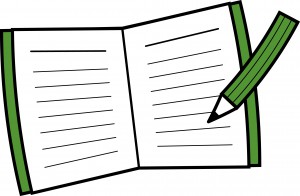
Learn Japanese with Intensive and Extensive Reading

